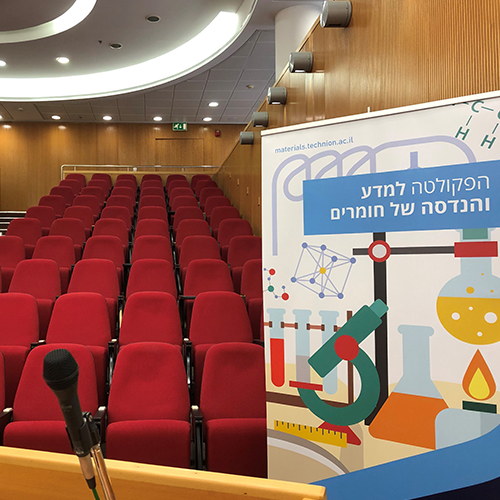
Dr. Ilya Svetlizky
16/04/2023
at 14:30 David Wang Auditorium, 3rd floor Dalia Maydan Bldg.
14:30
Prof. Shimshon Gottesfeld
Fuel Cell Consulting, Ltd, Niskayuna, NY, USA, and Herzliya, Israel
The common mechanistic pattern of electrocatalytic processes [1], consists of:
(a) electro-activation of catalyst sites taking place by a pseudo-capacitive redox process, or processes, followed by,
(b) the rate determining step (RDS) that sets the rate of the overall faradaic process.
This common mechanistic pattern results in a common form of rate dependence on electrode potential in the oxygen evolution (OER) and oxygen reduction (ORR) processes, exhibiting three consecutive typical regions along the overpotential axis:
(I) a first region of zero faradaic current below the “onset potential”, where the value of the onset potential is approximated by: ABS(Vonset -Vo) ~300 mV ,
(II) a second region just beyond the onset potential, of high rate of current rise with overpotential at x10 per 40-60 mV
(III) a third region of slower rise of the current with overpotential, at x10 per ~120 mV
Careful consideration of this mechanistic pattern while using the relevant values of the onset potential and activation energy, allows to predict accurately the cell current-voltage characteristic and reveal the dependence of the energy conversion efficiency of electrolyzers and fuel cells on the catalyst, the current and the temperature of choice.
Recognition of this pattern is also helpful for comparative evaluation of the two-step electrochemical-chemical cycle described in [2] vs. conventional water electrolysis.
[1] Shimshon Gottesfeld, J Electrochem.Soc.,124518 (2023)
[2] Hen Dotan et al, Nature Energy 4, 786 (2019)


